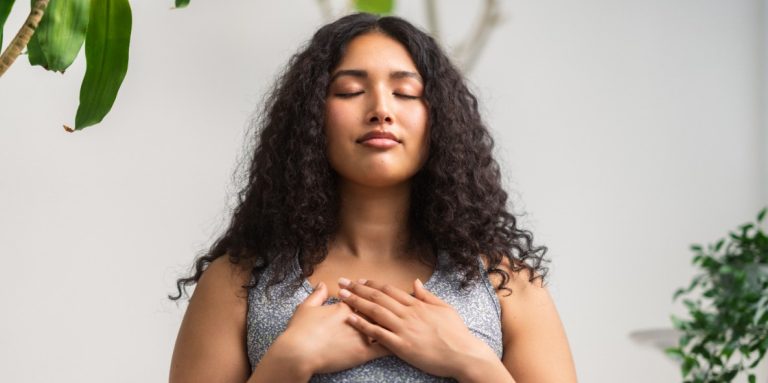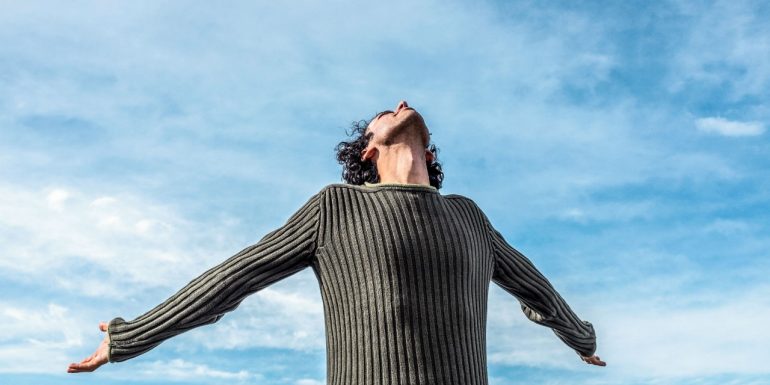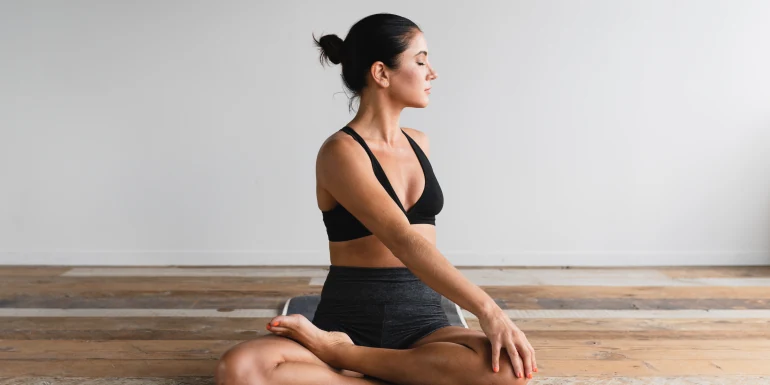
Breathing techniques to beat stress, panic and sleep issues
Stress, blood pressure and anxiety: breathing affects the body and mind. Did you know that we can consciously control how we breathe, thereby promoting well-being? Find out which simple everyday exercises can improve your breathing technique.
The way we breathe has a direct impact on our quality of life. Breathing techniques can help you lower your pulse in stressful situations, manage anxiety and panic attacks and fall asleep more easily.
Lower your pulse with breathing techniques
Our pulse rate indicates the frequency of our heart’s contractions per minute. A permanently high resting pulse rate is associated with an increased risk of heart attacks and strokes.
Reasons for a high resting pulse rate may include:
- Smoking
- Coffee and other drinks containing caffeine
- Psychological factors such as stress, anxiety and excitement
- Being overweight
- An unhealthy lifestyle
- Medications
- Illnesses
Lower your pulse rate with speech breathing
The body releases adrenaline when under stress and strain. Your heart rate increases to cope with the stress and breathing becomes shallow: you feel breathless. Speech breathing can help you get more air into your lungs. Your body receives more oxygen and your breathing becomes calmer.
- Sit comfortably on a chair with your torso upright and lean back on the backrest.
- Your chest and stomach should be able to move freely.
- Let your hands and shoulders hang loosely.
- Put your feet flat on the floor.
- Now breathe in slowly and deeply through your nose.
- Extend your exhalation by starting the breath with a consonant.
- An “sssss” works best. The quieter it sounds, the less air gets out and the longer the exhalation.
- Repeat this breathing technique ten times and you will notice your pulse rate quickly drop and your blood pressure fall.
We cannot live without the oxygen we breathe in. When we breathe, there’s a lot more that happens than just oxygen being taken into the blood. Read in the Ratgeber Breath what happens in your body when you breathe and how breathing correctly can help you in everyday situations and when exercising.
A breathing technique for anxiety and panic attacks
If we are overcome by feelings of anxiety, our chest can suddenly feel tight. It feels as if we can’t get any air and our breathing becomes shallow. Learned breathing techniques can be a valuable tool for finding calmness and relaxation in moments like this. If you regularly suffer from severe panic attacks and anxiety, it is essential that you see a doctor.
Pursed lip-breathing
The pursed-lip technique is particularly helpful if you are experiencing breathing difficulties. Fully breathing out the air you inhale helps you to take on board more fresh air. Your breath becomes a natural sedative.
- Sit up straight on a chair and rest your arms on a table.
- Breathe in calmly through your nose.
- Let the air escape slowly through a small gap between your lips.
- Make a “pffff” sound while doing so. This will restrict the air flow, allowing all the air to escape slowly.
- Continue to breathe in calmly through your nose and repeat this exercise until the panic attack or anxiety eases.
When your body is under stress, your brain releases hormones such as adrenaline and cortisol. Your body switches to a state of alert and readies itself for “fight or flight” mode. Consciously breathing in and out is the fastest and easiest way of overcoming stress.
A breathing technique to help you fall asleep
There are countless things that stop us from sleeping and make our thoughts go round and round in circles. Many people have difficulty falling asleep. If you have problems getting to sleep on consecutive nights, this can turn into a vicious cycle: you go to bed worried about lying awake again, which generates additional stress. Relaxation techniques help to calm your body and your thoughts.
Fall asleep faster with the 4-7-8 breathing technique
This method is based on an old yoga technique and was refined by American physician Dr Andrew Weil. The breathing cycle helps your body to reach a state of relaxation and fall asleep. The most important step is holding your breath. This helps to circulate oxygen through your body, which makes you feel relaxed.
- Take a few minutes to deepen and slow your breathing before starting the exercise. This will make it easier for you to find the rhythm.
- Breathe in through your nose for 4 counts.
- Hold your breath for 7 counts.
- Breathe out through your mouth for 8 counts. You will find this easier if you make a “pffff” sound while you’re doing it.
- Repeat this breathing sequence four times in total.
- Practice the breathing technique regularly when going to sleep, ideally every day.
Sleep deprivation doesn’t just make you tired – it makes you ill, too. How sleepless nights impact your body and your mind.
Breathing techniques can help you lower your pulse in stressful situations, manage anxiety and panic attacks and fall asleep more easily. They are free, you can use them anywhere and they don’t take long. Conscious breathing can help us control our physical and mental well-being.
Breathing classes – covered by Helsana
Breathing exercises can relieve stress and tension. COMPLETA supplementary insurance covers 75% of the costs of recognised health promotion courses, up to a maximum of CHF 200 per year.

The expert provided the editorial team with advice and input for this article. Anja Roth (Master of Science in Musculoskeletal Physiotherapy) works for Helsana’s health consultation team. She supports customers on questions to do with the musculoskeletal system and relaxation.


Newsletter
Find out more about current health issues every month and get all the information you need about our attractive offers from all Helsana Group companies * delivered by e-mail to read whenever it suits you. Our newsletter is free of charge and you can sign up here:
We did not receive your information. Please try again later.
* The Helsana Group comprises Helsana Insurance Company Ltd, Helsana Supplementary Insurances Ltd and Helsana Accidents Ltd.